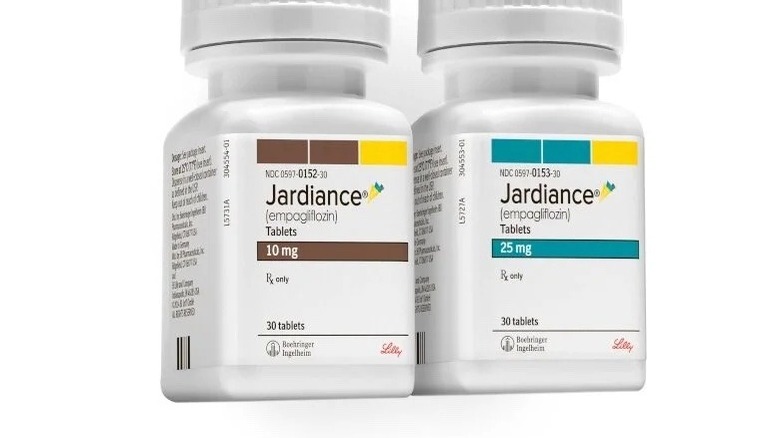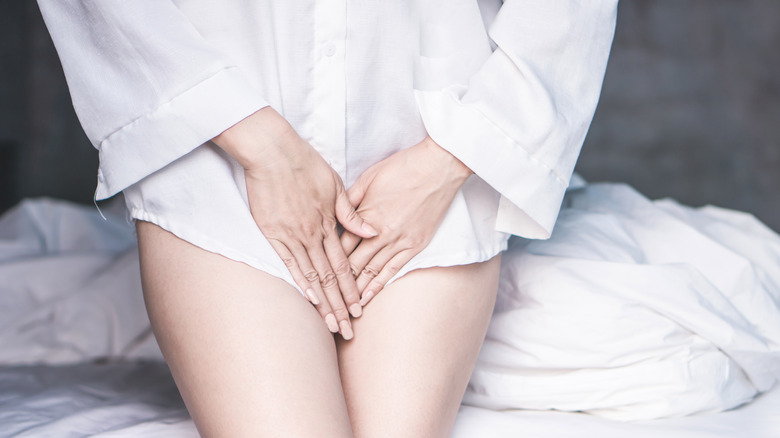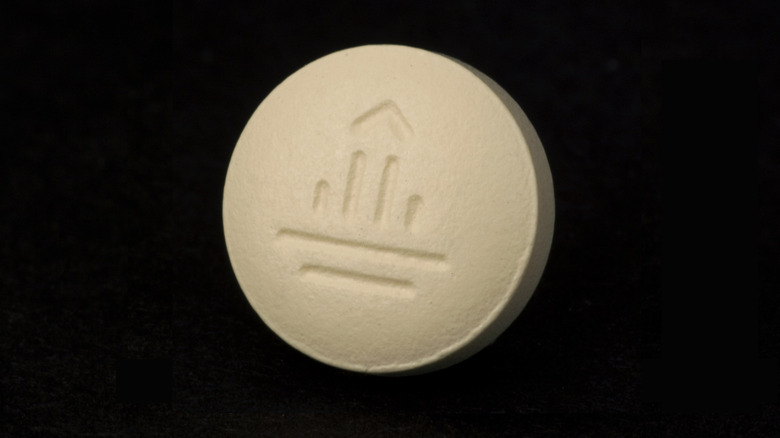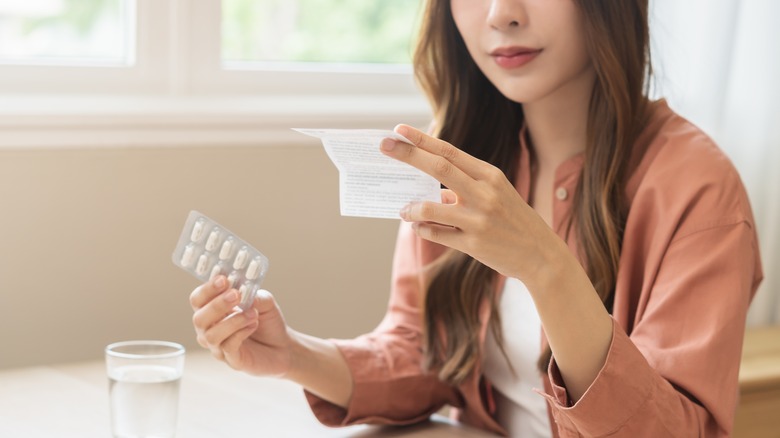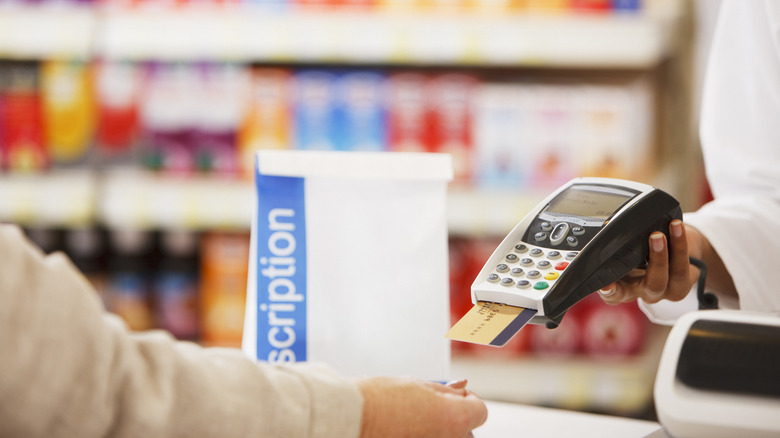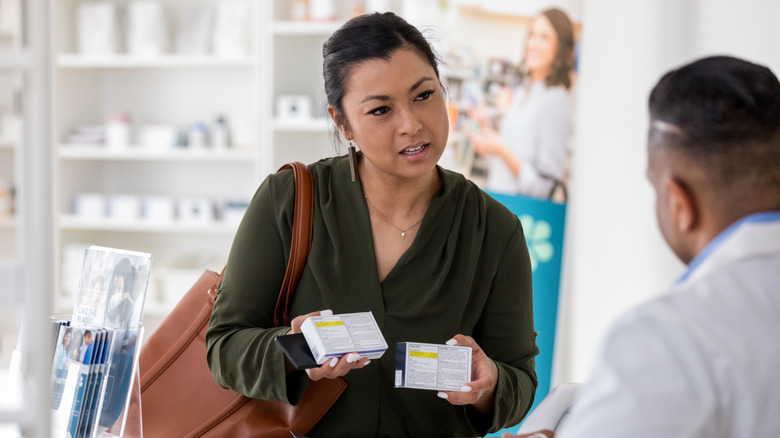The Jardiance Commercial Explained: Drug Uses, Side Effects, And More
The Jardiance jingle probably rings through your head for several hours after you watch the ad, and that's the point. You remember the ad for "the little pill with a big story to tell." Last year's ad might have been more memorable, featuring a woman dancing in the middle of a town square and other places. The most recent ad features the same catchy tune, but this time the main character begins her song and dance number at her work cubicle and enlists her coworkers in a dance around the office.
While the diabetes drug Ozempic is all the rage for its weight-loss benefits and its ability to help your pancreas create insulin, Jardiance (jar DEE ans) is a sodium-glucose co-transporter-2 (SGLT2) inhibitor that works in your kidneys. The Food and Drug Administration approved Jardiance (empagliflozin) as a once-daily oral tablet to treat type 2 diabetes in 2014. Boehringer Ingelheim Pharmaceuticals manufactures Jardiance.
What is Jardiance and what does it do?
Your blood sugar typically fluctuates up and down throughout the day, depending on what you eat and whether you exercise. That's why it's important to get a measure of your A1C, which is a percentage of your average blood sugar over the past three months. The A1C test can determine whether or not you have diabetes. A normal A1C is below 5.7%, and you're considered prediabetic if your percentage is between 5.7 and 6.4. An A1C of 6.5% or above is considered diabetes. To prevent health issues related to diabetes, you and your doctor should aim to keep your AIC level below 7%. That's where Jardiance comes in.
Combined with diet and exercise, Jardiance helps to keep your A1C below 7% while also reducing your fasting blood sugar by up to 25 points. Jardiance works with your kidneys to shuttle excess sugar from your system so you can pee it out.
The drug also lowers the risk of cardiovascular death in people who have heart disease and type 2 diabetes. Taking Jardiance could also result in a mild reduction in weight and blood pressure, but the drug isn't designed for either purpose. Jardiance also works for people who have heart failure and chronic kidney disease.
Jardiance's side effects
Urinary tract infections and yeast infections in women are the most common side effects of Jardiance. To prevent these infections, be sure to practice good hygiene and drink plenty of water. Because Jardiance helps remove excess sugar from your body through urination, you'll probably be peeing more often.
More serious side effects while taking Jardiance are dehydration, hypoglycemia (blood sugar is too low), and necrotizing fasciitis, which is a bacterial infection under your skin in the anus or genitals. You should see your doctor if you develop a fever or have considerable fatigue. Necrotizing fasciitis also has symptoms such as pain, swelling, or redness in the genital area.
Jardiance could also cause diabetic ketoacidosis, which occurs when there are too many ketones in the blood or urine. Although ketoacidosis is common in people with type 1 and type 2 diabetes, it can also occur in people who skip meals or follow a ketogenic diet. Have your doctor monitor your level of ketones, and stop taking Jardiance if you have nausea, abdominal pain, or trouble breathing.
Even though urinary tract infections are common if you take Jardiance, some urinary tract infections can become so serious that they require hospitalization. You could also develop a yeast infection of the penis or a serious yeast infection in the vagina. These aren't all the side effects of Jardiance, so you can head to the Jardiance website for a complete list.
Jardiance dosage
Jardiance comes in a 10-milligram tablet and a 25-milligram tablet. The typical dosage is 10 milligrams, but your doctor might increase your dose to 25 milligrams if you need additional control of your blood sugar. As it says in the commercial, you take Jardiance "at each day's start," with or without food. You won't see a drop in your A1C levels quickly. Although everyone's bodies are different, it could take as long as six months for Jardiance to take full effect.
If you miss your dose in the morning, take it as soon as you remember. However, if you don't remember to take your medicine until it's close to your next day's dose, just take your normal dose the next morning. You shouldn't take two doses of Jardiance at the same time. If you mix up your medications and have adverse effects, call Poison Control at 1-800-222-1222 or use the online site.
If you have surgery scheduled that requires fasting, you should stop taking Jardiance three days before your surgery. Once you've recovered from your surgery and can eat again, you can resume your medication.
Jardiance precautions
Some people might be allergic to empagliflozin and develop symptoms such as rash, hives, or swelling of the face, lips, or throat. Stop taking the medication and see your doctor if you develop these symptoms, or head to the emergency room.
Your doctor should know if you have a previous history of ketoacidosis, infection of the genital area, or kidney or liver problems. Problems with urinary tract infections or urination in general should be reported to your doctor before taking Jardiance. Your Jardiance dosage might change if you change your diet, such as by eating less or adopting a low-sodium diet. Your doctor should also be aware of how often and how much alcohol you drink.
Jardiance might not help reduce your blood sugar if you have type 2 diabetes and severe kidney issues. Although Jardiance works for people with chronic kidney disease, it's not effective for people with polycystic kidney disease or people who have received immunosuppressive therapy to treat their kidney disease. Jardiance is not for people with type 1 diabetes because it may increase the risk of ketoacidosis.
Avoid taking Jardiance if you're on these medications
Many medications can render other medications ineffective or magnify their effects. Because Jardiance helps rid your body of excess glucose through your urine, you could encounter problems if you take drugs or supplements that affect your blood sugar, kidneys, and hydration. These medications might include:
- Diuretics like furosemide
- Insulin
- Other diabetes drugs, like semaglutide (Ozempic)
- Lithium
- Fluoxetine (Prozac)
According to Drugs.com, 409 medications might interact with Jardiance. This might mean one drug might render the other more or less effective or increase your risk of side effects. The only major interaction with Jardiance is for people with declining renal function. Your doctor should check your renal function before taking Jardiance. You should not take Jardiance if you're on dialysis. Because this list isn't complete, it's best to check how your current medication interacts with Jardiance before taking the drug.
It's also not a good idea for you to drink alcohol while taking Jardiance because alcohol affects your blood sugar. You should avoid alcohol altogether if you haven't controlled your diabetes. Moderate drinking — one drink per day for women and two drinks for men — shouldn't have a great impact on your blood sugar once your diabetes is under control.
How much does Jardiance cost?
A month's supply of Jardiance costs $570.48 before insurance or pharmacy costs. Because there is no generic form of Jardiance, the lowest price could cost you about $595 a month on GoodRx. Although the Food and Drug Administration has approved generic versions of Jardiance, you won't be able to get them until 2025.
Most people with commercial insurance or Medicare can get Jardiance without a copayment or pay up to $50 a month, depending on their insurance provider. Some insurance plans might require, on average, a copay of $232 a month. Medicaid patients might see a copay of up to $10 a month. While Veterans Administration patients could pay as little as $11 a month, TRICARE prescription coverage could have a different copayment depending on where Jardiance is dispensed.
People without insurance might have to pay the full retail price, but some people might receive Jardiance for free through the Boehringer Ingelheim Cares Foundation Patient Assistance Program. This program works with senior citizens and people with limited incomes.
Jardiance vs. Invokana
If you have type 2 diabetes, you can choose a similar SGLT2 inhibitor to Jardiance, such as Invokana (canagliflozin). Because both drugs stop a protein that reabsorbs glucose into your kidneys, you'll experience similar dehydrating side effects with Invokana. You're also still at risk for ketoacidosis and low blood sugar if you choose Invokana.
Invokana has some different side effects that you won't see if you take Jardiance. You could experience mineral depletion while taking Invokana, particularly potassium and magnesium. This could result in more bone fractures. Jardiance could cause joint pain or respiratory tract infections. If you have cardiovascular disease and type 2 diabetes, Jardiance can reduce your risk of cardiovascular death, while Invokana cannot. On the other hand, Invokana can reduce your risk of end-stage kidney disease and other conditions if you have both type 2 diabetes and diabetic nephropathy (per SingleCare).
In terms of cost, Invokana also doesn't have a generic option, which means you'll be paying about the same price for this drug if you don't have insurance. Some commercial insurers and Medicare Part D plans don't cover Invokana.
